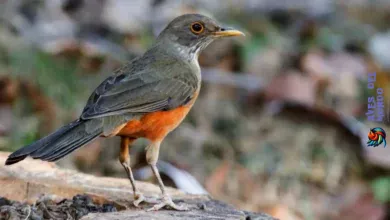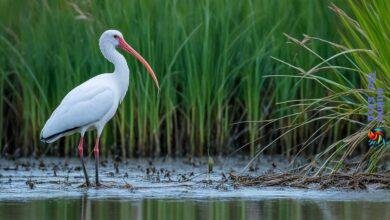Partridges are fascinating birds that captivate enthusiasts with their beauty, distinctive calls, and interesting behavior. Whether you’re interested in partridge hunting, exploring partridge recipes, or simply learning more about these remarkable creatures, this article is for you. Discover 13 intriguing facts about partridges, including their habitat, diet, social behavior, and mating habits. Additionally, we’ll provide valuable care tips for those interested in raising and conserving these birds.
Key Takeaways:
- Partridges belong to the family Phasianidae, which includes pheasants, quails, and chickens.
- There are different species of partridges found across various regions of the globe.
- Partridges are ground-dwelling birds that prefer terrestrial habitats like grasslands and fields.
- Male partridges are known for their distinctive calls, especially during the breeding season.
- Partridges have an omnivorous diet, consuming seeds, grains, insects, and more.
Partridges belong to the family Phasianidae
Partridges are small to medium-sized birds that are classified under the family Phasianidae, which includes pheasants, quails, and chickens. They are known for their plump bodies and short, rounded wings.
This classification allows us to understand their biological relationship to other bird species and their unique characteristics within the broader group. Partridges share common features with other members of the Phasianidae family, such as their ground-dwelling nature and omnivorous diet.
«Partridges are fascinating members of the Phasianidae family, showcasing their distinctive behaviors and adaptations. Their classification under this family helps us appreciate their place in the avian world and the remarkable traits that set them apart.»
In addition to partridges, the family Phasianidae encompasses a diverse range of species, each with its own distinctive qualities. By studying the relationships and characteristics within this family, researchers and enthusiasts gain valuable insights into the evolution, behavior, and conservation of these beloved birds.
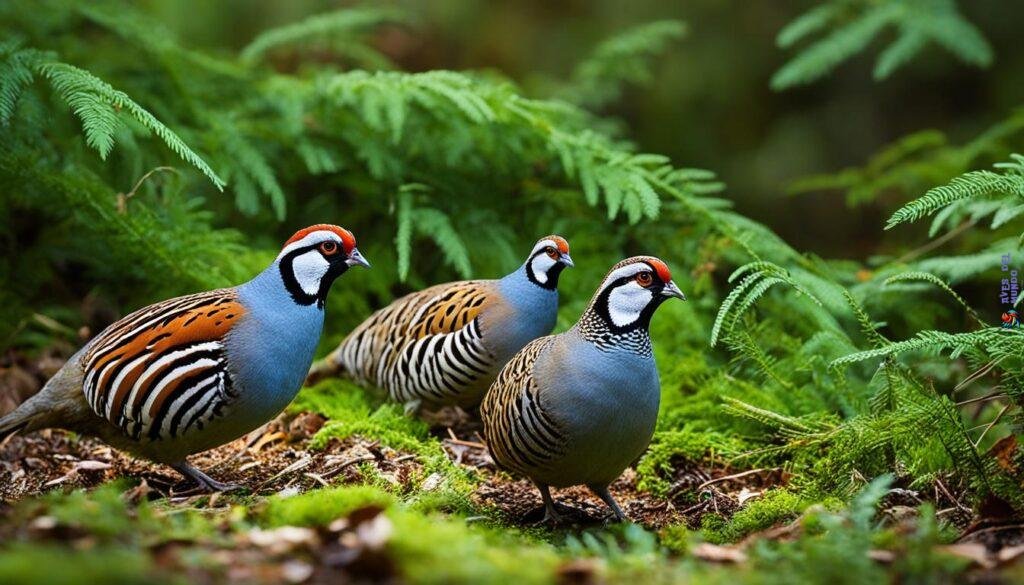
Characteristics of the family Phasianidae:
- Ground-dwelling birds
- Omnivorous diet
- Distinctive plumage
- Varied vocalizations
- Elaborate courtship displays
Partridges’ membership in the family Phasianidae provides a fascinating context for understanding their biology, behaviors, and ecological roles. This knowledge is invaluable for enthusiasts, researchers, and conservationists alike, as it contributes to the overall understanding and appreciation of these remarkable birds.
There are different species of partridges
Partridges are found in various regions across the globe, including Europe, Asia, Africa, and the Americas. These beautiful birds encompass a variety of different species, each with its own unique physical features, behavior patterns, and habitat preferences. Let’s take a closer look at some well-known examples:
| Species | Physical Features | Habitat |
|---|---|---|
| Grey Partridge | Distinctive gray plumage with chestnut markings | Open grasslands and agricultural fields |
| Red-legged Partridge | Brown plumage with reddish legs | Woodlands, hedgerows, and farmlands |
| Chukar Partridge | Gray-brown plumage with black and white stripes | Rocky terrains and arid regions |
Each species of partridge displays its own characteristics and adaptations, making them fascinating subjects for bird enthusiasts and conservationists alike.

Conservation of Partridge Species
Conserving partridges and their habitats is essential to ensure the survival of these diverse species. By understanding their specific needs and implementing conservation efforts, we can protect their populations and contribute to the biodiversity of our ecosystems.
Partridges are ground-dwelling birds
Partridges, belonging to the pheasant family, are fascinating ground-dwelling birds known for their beauty and unique behavior. They have a preference for terrestrial habitats like grasslands, fields, and farmlands. Their ability to run swiftly and take short flights allows them to escape from predators and maneuver through their environment with ease. This behavior, combined with their habitat preference, contributes to their distinctive characteristics as ground-dwelling birds.
Understanding the biology of partridges as ground-dwelling birds is essential for enthusiasts interested in providing suitable environments for their captive partridges or contributing to partridge conservation efforts. Creating appropriate habitats that mimic their natural surroundings helps ensure the well-being and happiness of these magnificent birds.

«Partridges, with their ground-dwelling nature, possess remarkable adaptability to various environments.» – Birdwatchers Journal
Enthusiasts can enhance the quality of partridge habitats by incorporating natural features such as shrubs, bushes, and grasses that provide suitable cover and nesting areas. Additionally, maintaining open spaces for foraging and creating sheltered spots for roosting will contribute to their overall comfort.
By understanding the ground-dwelling tendencies of partridges and providing them with the optimal living conditions, enthusiasts can observe these captivating birds in their natural element and contribute to their well-being and conservation.
Partridges are known for their distinctive calls
When it comes to vocalizations, male partridges truly stand out, particularly during the breeding season. They have a remarkable ability to create loud and repetitive calls that serve multiple purposes. One of the primary functions of these distinctive calls is to mark their territory and establish dominance.
Their calls act as a sonic boundary, alerting other partridges to the presence of a male and deterring potential intruders from encroaching upon their territory. This is especially crucial during the breeding season when competition for mates intensifies. By making their presence known through their vocalizations, male partridges effectively stake their claim.
Moreover, these calls also play a vital role in attracting females. The unique combination of volume, rhythm, and pattern in a male partridge’s call serves as a signal of his desirability as a mate. Females are naturally drawn to the most impressive calls, as they indicate strength, health, and a suitable territory for raising their offspring.
Partridges have evolved a diverse range of distinctive calls, each specifically tailored to their species and region. These calls can vary in pitch, duration, and complexity, creating a rich soundscape in the wild. Listening closely to the unique calls of different partridge species can be both intriguing and rewarding, providing a deeper understanding of their social dynamics and behavior.
Recognizing and understanding these calls can enhance the overall experience of observing and interacting with partridges in the wild or captivity.
Distinguishing partridge calls:
To illustrate the diversity of partridge calls, here are some notable examples:
| Partridge Species | Distinctive Call |
|---|---|
| Grey Partridge | Clear, repetitive «kerr» or «cackling» call, often likened to a chuckle |
| Red-legged Partridge | Series of loud, rapid, and rhythmic «karr-karr-karr-karr-karr» calls |
| Chukar Partridge | A mix of chuckles, churrs, and purrs, creating a distinctive musical quality |
These examples only scratch the surface of the unique vocalizations found within the world of partridges. Each species has its own characteristic calls, allowing enthusiasts and researchers to distinguish between them based on their auditory patterns.
Understanding and identifying these calls can lead to a deeper appreciation of partridge behavior and enhance your overall birdwatching or conservation efforts. So, the next time you encounter a partridge, take a moment to listen to its distinctive call and immerse yourself in the fascinating world of these vocal avian creatures.

Partridges have an omnivorous diet
Partridges are versatile in their food choices, as they have an omnivorous diet that encompasses a wide range of items. They consume seeds, grains, and berries to fulfill their nutritional needs. Additionally, partridges have a penchant for insects, which provide them with essential proteins.
These adaptable birds can also consume small reptiles or amphibians that come their way. This flexibility in their diet allows them to survive and thrive in various environments, where they can utilize the available resources to sustain themselves.
When caring for partridges in captivity, it is crucial for enthusiasts to provide a balanced and appropriate diet. This ensures their overall health and well-being. A well-rounded diet for captive partridges includes a combination of commercial game bird feed, fresh fruits, vegetables, and insects.
| Food | Importance |
|---|---|
| Seeds and grains | Rich in carbohydrates and essential nutrients |
| Berries and fruits | Provide vitamins and antioxidants |
| Insects | Source of protein for growth and development |
| Commercial game bird feed | Ensures a balanced diet with necessary nutrients |
By offering a varied and nutritious diet, enthusiasts can support the overall health and vitality of their partridges, facilitating their natural behaviors and promoting successful breeding.
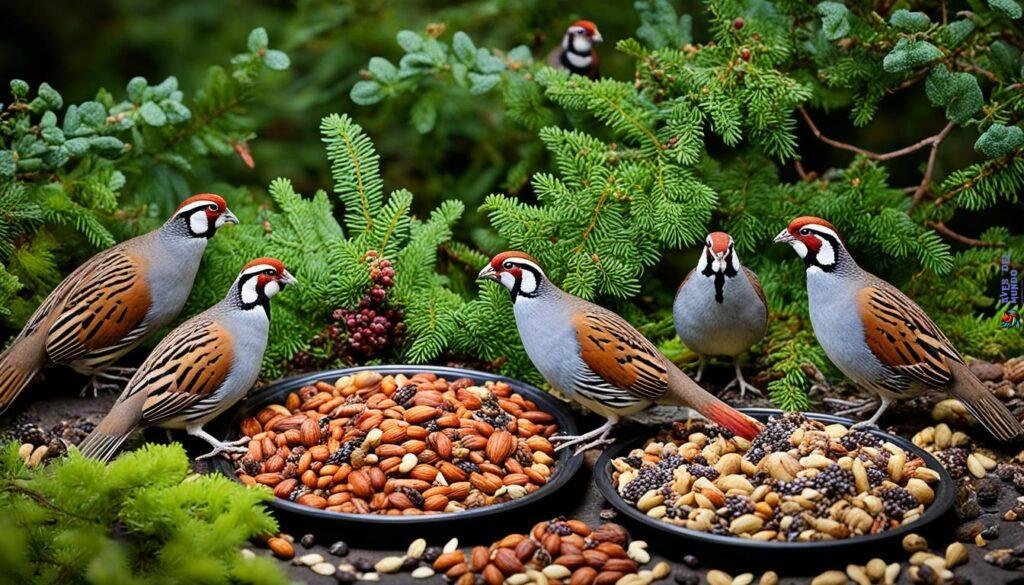
Partridges are highly social birds
Partridges are known for their highly social nature, often forming groups called coveys. These coveys consist of several individuals and provide safety in numbers. This social behavior is prominent, particularly during the non-breeding season, when partridges come together to forage, roost, and protect each other.
In coveys, partridges engage in various cooperative behaviors, such as foraging together for food, alerting each other to potential dangers, and providing companionship. This social structure allows them to benefit from collective knowledge, increase their chances of survival, and maintain a strong sense of community.
Observing the social interactions within a covey can be a fascinating experience. Partridges communicate with each other through a combination of vocalizations, body language, and visual displays. They establish a hierarchy within the group, with dominant individuals taking charge and leading the covey in its activities.
Understanding the social behavior of partridges is essential for enthusiasts interested in raising or conserving these birds. By creating suitable social structures and environments, it is possible to ensure the well-being and happiness of partridges in captivity.
To gain further insight into the social behavior of partridges, consider the following:
- Observe the interactions between partridges within a covey, paying attention to vocalizations, body postures, and gestures.
- Note the hierarchy within the covey and how individuals establish dominance and maintain social order.
- Provide ample space and appropriate companionship when housing partridges in captivity to mimic their natural social environment.
| Benefits of Partridge Coveys | Examples of Cooperative Behaviors |
|---|---|
| Increased safety in numbers | Foraging together for food |
| Increased chances of survival | Alerting each other to potential dangers |
| Collective knowledge and learning | Providing companionship |

Partridges mate for life
In the world of partridges, love is everlasting. Once a pair of partridges forms a bond, they typically stay together for life. These monogamous birds engage in courtship displays to attract a mate, showcasing their dedication and loyalty. Elaborate dances and calls are part of their mating rituals, creating a captivating spectacle in nature. Understanding their mating habits and the bond they form can provide valuable insights into their reproductive behavior.
For enthusiasts interested in raising or conserving partridges, knowledge of their mating habits is essential. Creating suitable breeding environments becomes a priority when seeking successful reproduction. By mimicking their natural courtship behaviors and providing the right conditions, enthusiasts can encourage bonding and facilitate successful breeding.
The Importance of Mating for Life
Mating for life is a significant aspect of partridge behavior, offering several advantages for both individuals and their offspring. By forming long-term partnerships, partridges establish a stable foundation for raising their young and protecting their territory. This committed bond contributes to the success and survival of future generations.
«Partridges truly embody the concept of ‘until death do us part.’ Pairing for life ensures the stability and continuity of their social structure. It leads to healthier offspring and stronger bonds within the community.»
Creating Breeding Environments
When creating breeding environments for partridges, it’s important to consider their natural courtship behaviors. Providing ample space for courtship displays and building suitable nesting sites are crucial steps in encouraging successful mating. Understanding the intricacies of their courtship dances and calls can inform enthusiasts on how to create an environment that mimics their natural behaviors.
Additionally, offering a variety of vegetation, shrubs, and natural materials can assist in nest-building and provide cover for the birds during courtship rituals. By studying partridges’ mating habits and implementing suitable strategies, enthusiasts can promote a thriving population and contribute to the conservation of these remarkable birds.

| Benefits of Mating for Life | Creating Breeding Environments |
|---|---|
|
|
Partridges build ground nests
Female partridges exhibit fascinating nesting behavior by constructing their nests on the ground. These nests are often hidden under vegetation, providing a secure and concealed environment for their precious eggs. Using a combination of twigs, leaves, and grass, female partridges meticulously design their nests to protect their offspring from potential predators.
This nesting behavior plays a crucial role in the reproductive strategy of partridges, contributing significantly to the survival and well-being of their chicks. By nesting on the ground, partridges minimize the risk of their nests being detected, ensuring the safety of their eggs during incubation.
To support successful breeding when caring for partridges in captivity or promoting conservation efforts, it is vital to provide appropriate nesting materials and structures. This includes ensuring the availability of natural materials such as twigs, leaves, and grass. By replicating the ground nesting conditions, enthusiasts can create a conducive environment that mimics the partridges’ natural habitat and encourages successful breeding.

Preserving the delicate balance:
«The construction of ground nests is a remarkable feat of instinct, highlighting the adaptive behaviors of partridges. It allows them to adhere to their natural reproductive strategies while simultaneously ensuring the safety and well-being of their offspring.» – Dr. Jane Adams, Avian Biologist
Partridges have well-camouflaged plumage
One of the remarkable features of partridges is their well-camouflaged plumage. They have a combination of browns, grays, and whites that blend seamlessly with their natural habitat, allowing them to evade predators and remain hidden from potential threats. This effective camouflage serves as a vital defense mechanism for these beautiful birds.
The intricate patterns and colors of their feathers help them blend into the vegetation and terrain where they reside. Whether it’s the speckled patterns on the body or the mottled wings, partridges have evolved to match their surroundings, making them difficult to spot by both predators and human eyes.
This natural camouflage not only provides protection but also offers advantages in hunting and foraging for food. Partridges can move stealthily through their environment, utilizing their well-camouflaged plumage to approach prey or forage for seeds, berries, and insects without alerting potential dangers.
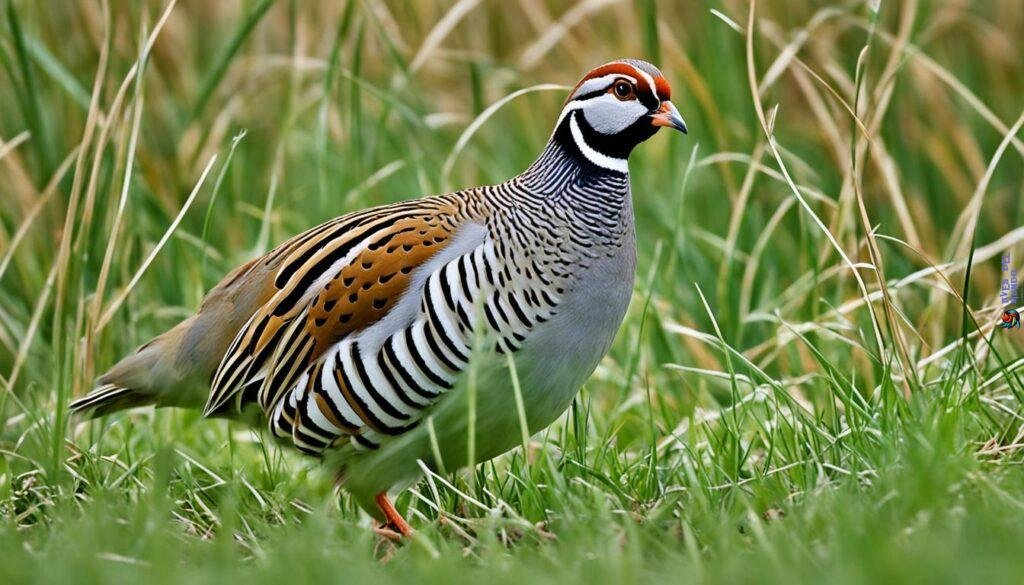
Understanding the intricate details of partridges’ well-camouflaged plumage is crucial for enthusiasts, birdwatchers, and conservationists. It can assist in observing these elusive birds in their natural habitat or designing suitable enclosures for captive populations. By recognizing and appreciating their amazing ability to blend in seamlessly with their environment, we can ensure the well-being and safety of partridges in both wild and controlled settings.
Partridges are capable of short, powerful flights
Although primarily ground-dwelling birds, partridges possess a remarkable ability to take flight when necessary. These birds are equipped with short, rounded wings that enable them to execute rapid and forceful flights, allowing them to swiftly escape from potential threats. This flight capability is a crucial adaptation that contributes to their survival and facilitates their movements within their natural habitats.
Understanding the flight capabilities of partridges is essential for enthusiasts and conservationists alike. When raising or conserving partridges, appropriate enclosure design and management can be informed by their flight patterns. Providing ample space and suitable conditions for short bursts of strong flight can promote the birds’ physical and mental well-being.
Furthermore, studying the flight abilities of partridges can enhance our appreciation of their natural behavior. Witnessing these birds in flight highlights their agility, grace, and adaptability as they navigate their surroundings. Whether observing partridges in the wild or caring for them in captivity, recognizing and valuing their flight capabilities contributes to a deeper understanding of their unique characteristics and behaviors.

Flight Patterns in Partridges
Partridges typically employ short, powerful flights to evade predators or travel short distances. These flights are characterized by quick takeoffs and swift movements in low altitudes. While they may not possess sustained, long-distance flight abilities like some other bird species, partridges excel in their agility and speed during short bursts of flight.
The combination of their robust wings and strong flight muscles enables partridges to achieve impressive aerial maneuvers. Their flight patterns often involve rapid wingbeats and tight turns, allowing them to change direction swiftly and navigate through dense vegetation or challenging terrain.
It is noteworthy that flight is not the primary mode of transportation for partridges. They predominantly rely on their well-developed legs for running and walking on the ground. However, when faced with adverse conditions or imminent danger, the ability to take flight swiftly becomes an invaluable asset for their survival.
Enclosure Design and Management Considerations
When creating enclosures for captive partridges, it is important to provide sufficient space and environmental enrichment that accommodates their flight capabilities. A spacious aviary or enclosure allows partridges to engage in short flights, promoting their physical exercise and overall well-being.
The enclosure design should include appropriately sized perches or elevated platforms where partridges can rest and observe their surroundings. These structures simulate natural resting spots and enable the birds to exhibit their natural behaviors, including short flights between perches.
Additionally, the enclosure should offer vegetation and hiding spots that mimic the partridges’ natural habitat. This allows them to seek cover and engage in behaviors such as foraging and dust bathing, which contribute to their overall welfare.
By understanding and accommodating the flight capabilities of partridges in enclosure design and management, enthusiasts and conservationists can provide a stimulating and nurturing environment that promotes the birds’ natural behaviors and enhances their quality of life.
Partridges are commonly hunted game birds
Partridges are highly sought-after game birds in many regions due to their abundance and flavorful meat. Their status as game birds has led to the establishment of specific hunting seasons and regulations to ensure responsible hunting practices and conservation efforts.
For enthusiastic hunters, partridge hunting provides an exhilarating experience, matching their skills against these agile and elusive birds. The thrill of the chase and the satisfaction of a successful hunt make partridge hunting a popular outdoor activity.
Additionally, partridge meat is treasured by culinary enthusiasts for its rich flavor and versatility in various gourmet dishes. Whether roasted, grilled, or incorporated into stews and casseroles, partridge meat adds a distinct and savory taste to any meal.
It is vital for hunters to familiarize themselves with local hunting regulations, including license requirements, bag limits, and designated hunting areas. By adhering to these regulations and practicing responsible hunting, hunters can contribute to the preservation and sustainable management of partridge populations. With proper conservation efforts, future generations can continue to enjoy the thrill of partridge hunting and the delectable taste of their meat.
